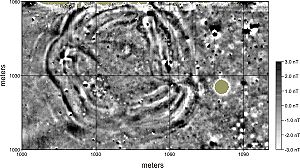
Talking circle
Encyclopedia

In current use, the council circle is often synoymous with the talking circle, and is a means of group communication that promotes input from all the members. A talking stick
Talking stick
The talking stick, also called a speaker's staff, is an instrument of aboriginal democracy used by many tribes, especially those of indigenous peoples of the Northwest Coast. In a tribal council circle, a talking stick is passed around from member to member allowing only the person holding the...
, or other significant or impromptu object, is passed around the circle, and only the circle member holding the stick is allowed to speak, though he or she may allow others to interject. This is the preferred type of forum for many present-day tribes as well as groups such as the Rainbow Gathering
Rainbow Gathering
Rainbow Gatherings are temporary intentional communities, typically held in outdoor settings, and espousing and practicing ideals of peace, love, harmony, freedom and community, as a consciously expressed alternative to mainstream popular culture, consumerism, capitalism and mass media.Rainbow...
s that revive tribal life.
The present-day use of the talking sticks suggests to many that talking sticks, in the context of the council circle, present evidence of historical and pre-historical use by native tribes to create egalitarian forums. From photographs, we know that talking sticks where very tall, suggesting that circle particpants would have stood when speakinghttp://books.google.com/books?id=S8RGA5UyrbAC&pg=PA103&lpg=PA103&dq=edward+s.+curtis+%22nac+c-020826%22&source=bl&ots=NYVFSDfWtL&sig=gdY11lvG54OrzoMlBPcd6IYrVg8&hl=en&ei=tD2YToOrKcSRsAKAi6m7BA&sa=X&oi=book_result&ct=result&resnum=1&ved=0CBkQ6AEwAA#v=onepage&q=edward%20s.%20curtis%20%22nac%20c-020826%22&f=false.
Present-day talking circles
As described in many web sites, a talking circle is used as a way to organize group discussions in an "egalitarian" manner. Group members typically sit in a circle and discuss issues with simple rules: the talking stick, or other object, is passed around the circle, and the person holding the talking stick may speak though the "holder" may allow interjection.Sources
Text citationsOther citable sources
- Talking Circles by Mark Umbreit, 2003, source
-
-
- A guide to facilitating Ojibwe and Lakota talking circle traditions much like group therapy.
-
- Modern applications to group work by Kevin A. Fall and Justin E. Levitov, 2000, source
-
-
- Application of the Cherokee Do-ne-la-we-ga or "coming together" to children's group therapy.
-
- Cultural anthropology: the human challenge, William A. Haviland, Harald E. L. Prins, and Dana Walrath, 2007, source
-
-
- The restoration of the traditional council circle to replace the modern justice system.
- Researching the culture in agri-culture by Michael M. Cernea, and Amir H. Kassam, 2005, source
- Talking circle and stick in an Indonesian native forest project.
- The restoration of the traditional council circle to replace the modern justice system.
-
Popular sources

